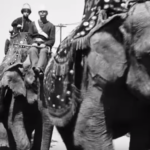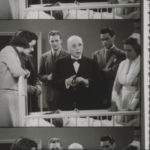Robert Green’s Mardi Gras Balls of the 1950s
Two films of carnival balls will survive with the aid of a federal grant
n
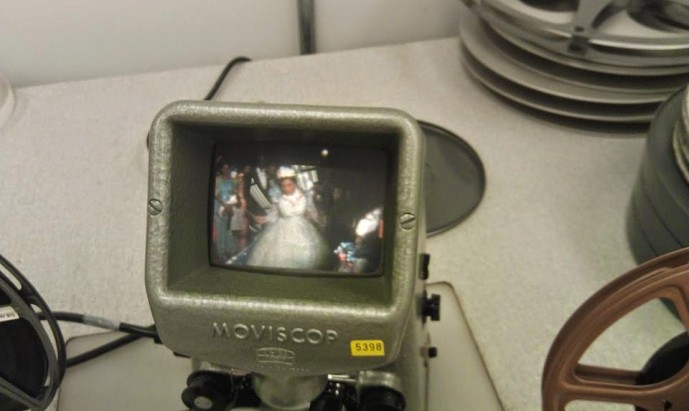
n
Few people alive today would have witnessed the Carnival Balls of the 1950s to 1970s that were a fixture of African American life in New Orleans and other southern cities.
Fortunately, in 1955 and 1956, a New Orleans photographer, Robert Green, realized their importance to the history of the city, and built a collection of images of black social life. Among them were two 8mm home movies of Carnival Balls, part of a long tradition of carnival costuming and performance that historically were key components of African American life in New Orleans.
The films show members of Mardi Gras clubs or “krewes” entering a decorated venue in themed costumes — in one instance, the theme is “Symphony Variations,” and the women wear white gowns; in another, it is “Satan’s Inferno,” and the costumes strike deviling notes.
The footage depicts dancing and a live-but-silent performance by the band of Louis Jordan, “the King of the Jukebox” and hugely popular with both black and white audiences in the later years of the swing era. The films also show a parade of marching bands and floats, one carrying a banner that reads “Krewe of Klaver” in reference to the Knights of Peter Claver, the largest and oldest-continually extant predominantly African-American lay Catholic organization. Also in the Green footage are other krewes tentatively identified as the Jolly Bunch and Young Men’s Illinois Club.
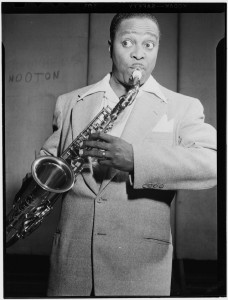
Louis Jordan, New York, N.Y., 1946. Image: William P. Gottlieb, public domain.
The two rare audiovisual records of black-American social life have been housed in the Robert S. and Lillie Mae Green collection at the Amistad Research Center, an independent nonprofit organization housed on the campus of Tulane University that is the oldest, largest, and most comprehensive independent archive specializing in the history of African Americans and other ethnic minorities. And how their preservation is assured, thanks to a grant from the National Film Preservation Foundation.
In June 2014, as each year since 1998, the National Film Preservation Foundation made numerous grants to American institutions as part of its annual cycle of support for films deemed historically important. The NFPF, which is the nonprofit organization that the U.S. Congress created in 1996 to help save America’s film heritage, assists archives, historical societies, libraries, museums, and institutions of higher education to preserve and make publicly available American films that are not likely to survive without public support. Since 1998, it has provided preservation resources to 273 organizations.
Officials at the Amistad center report that Robert Green’s Mardi Gras ball films are among the most requested audiovisual items they hold. But Brenda Flora, an archivist there, says that they have until now been largely inaccessible to researchers. She adds that because African-American carnival krewe balls have traditionally been private affairs, film of them is rare. The footage is all the more valuable because many krewes no longer exist.
Flora says the film is “truly rare” because Hurricanes Betsy in 1965 and Katrina in 2005 flooded neighborhoods where black Carnival traditions were concentrated, destroying many related artifacts. She says the NFPF grant will permit her and her colleagues to create new preservation masters of the films as well as new viewing copies for researchers to use.
The Amistad center also holds an assortment of important films of African American life in its Ed Pincus Film Collection: 1965-67. The 52 hours of 16mm black-and-white film footage were the basis for Pincus‘s making of two acclaimed civil-rights-era documentaries, Black Natchez, released on NET Journal between 1965 and 1967, and its companion film Panola, from 1965-69.
Pincus, along with David Neuman, shot the footage in Natchez, Mississippi, between June and September 1965. Black Natchez recorded attempts to organize and register black voters in a Mississippi town. Violence directed at black organizers led to increasing community tension and eventually the intervention of the National Guard as some African American men attempted to set up self-defense organizations. The 21-minute Panola portrayed a local black man, perhaps a police informant, describing his trying to make sense of the Civil Rights Movement in the South.
Pincus and Neuman captured both everyday interactions among ordinary people as well as their attempts to organize the civil rights cause through street rallies and protest marches. Some of the footage captured secret organizational meetings, and some depicts factional struggles between young radicals and a less militant the old guard.
Among the footage at the Amistad center are many reels shot as part of a planned sequel to Black Natchez that Pincus never made. The center’s Brenda Flora wrote in an item on the Amistad website that this later footage had provided her “an eye-opening look into life in Natchez” in 1967 in the days following the car-bombing murder of Wharlest Jackson, a civil-rights organizer (unsolved even to this day). “He had received threats at the plant, and the incident highlighted the continued presence of the Ku Klux Klan in Natchez,” Flora wrote. “What Pincus captured were the protest marches, community meetings, and general public sentiment following Jackson’s death. The rolls of film he shot are genuine, often candid, portrayals of a city at a time of turmoil. At times, Pincus and his partner, David Neuman, turn the camera on an individual and interview him. Everyone from a prominent civil rights leader like Charles Evers to the average man in the street is asked to express his thoughts and feelings about the racial tensions and violence in the city.
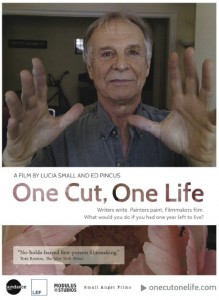 “Some of the most engaging rolls to watch, however, are shot in a more ‘fly on the wall’ style. My favorite scenes are the ones shot in a local barbershop, where the camera simply looks on and listens in while members of the community discuss the murder and the state of the city.” It is the immediacy of the footage, in the way it provides insights into emotions and thoughts of community members, that she found most impressive, Flora wrote: “With the perspective of history, it is easy to forget that these men and women didn’t know what was going to happen next. They didn’t know if they were safe, or who among them would be the next target of violence. But they still marched publicly, made speeches, and worked to foster communication with the white community, despite the jeopardy it put their lives in, because they knew that it needed to be done.”
“Some of the most engaging rolls to watch, however, are shot in a more ‘fly on the wall’ style. My favorite scenes are the ones shot in a local barbershop, where the camera simply looks on and listens in while members of the community discuss the murder and the state of the city.” It is the immediacy of the footage, in the way it provides insights into emotions and thoughts of community members, that she found most impressive, Flora wrote: “With the perspective of history, it is easy to forget that these men and women didn’t know what was going to happen next. They didn’t know if they were safe, or who among them would be the next target of violence. But they still marched publicly, made speeches, and worked to foster communication with the white community, despite the jeopardy it put their lives in, because they knew that it needed to be done.”
The way the Pincus Collection’s footage brings the era to life “will make them invaluable to researchers,” she suggested. More material from the full expanse of Pincus‘s fascinating career are held in the Ed Pincus Collection at Harvard Film Archives.
— Peter Monaghan
Previous Post: Wunderkino 4: Visions of House and Home



